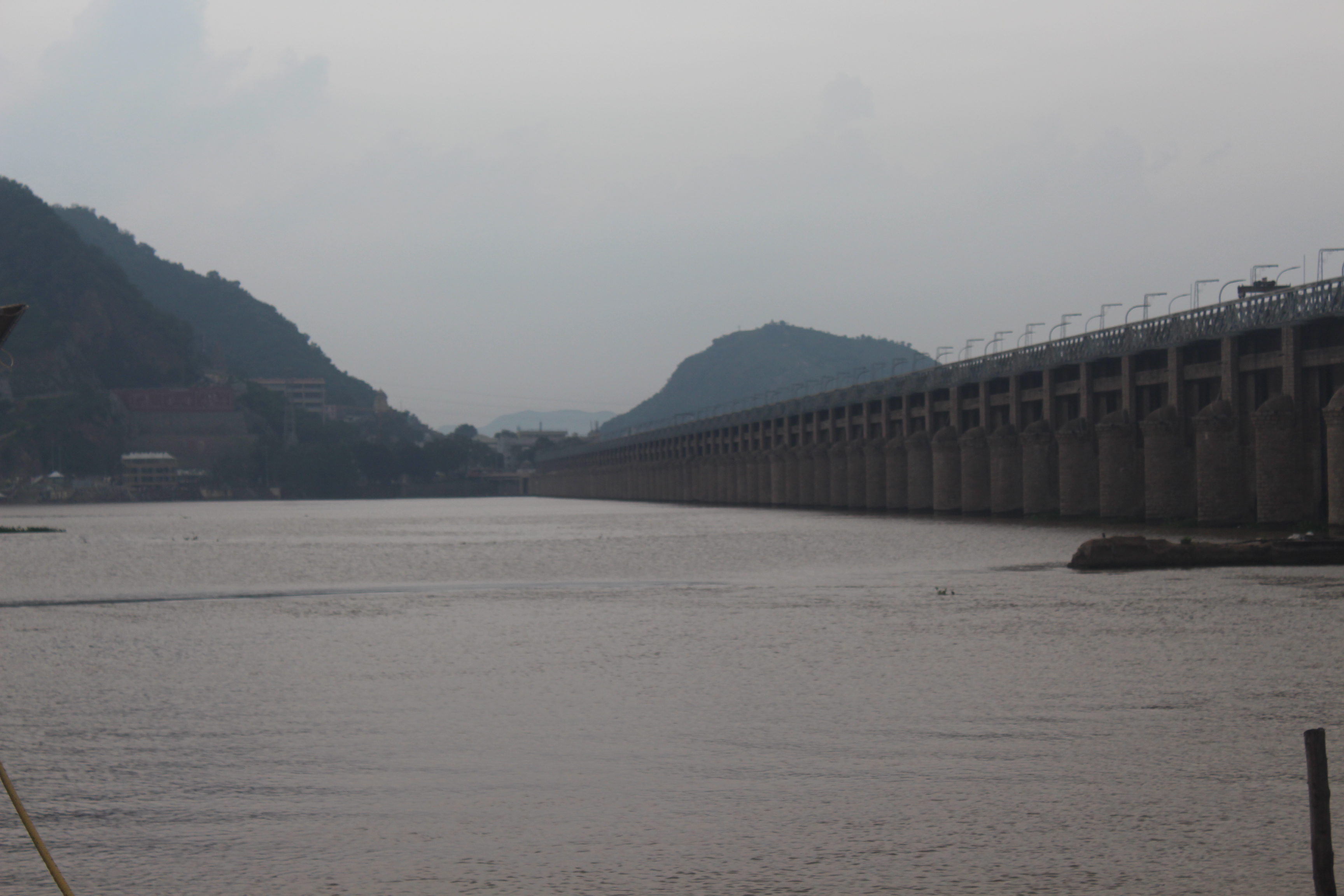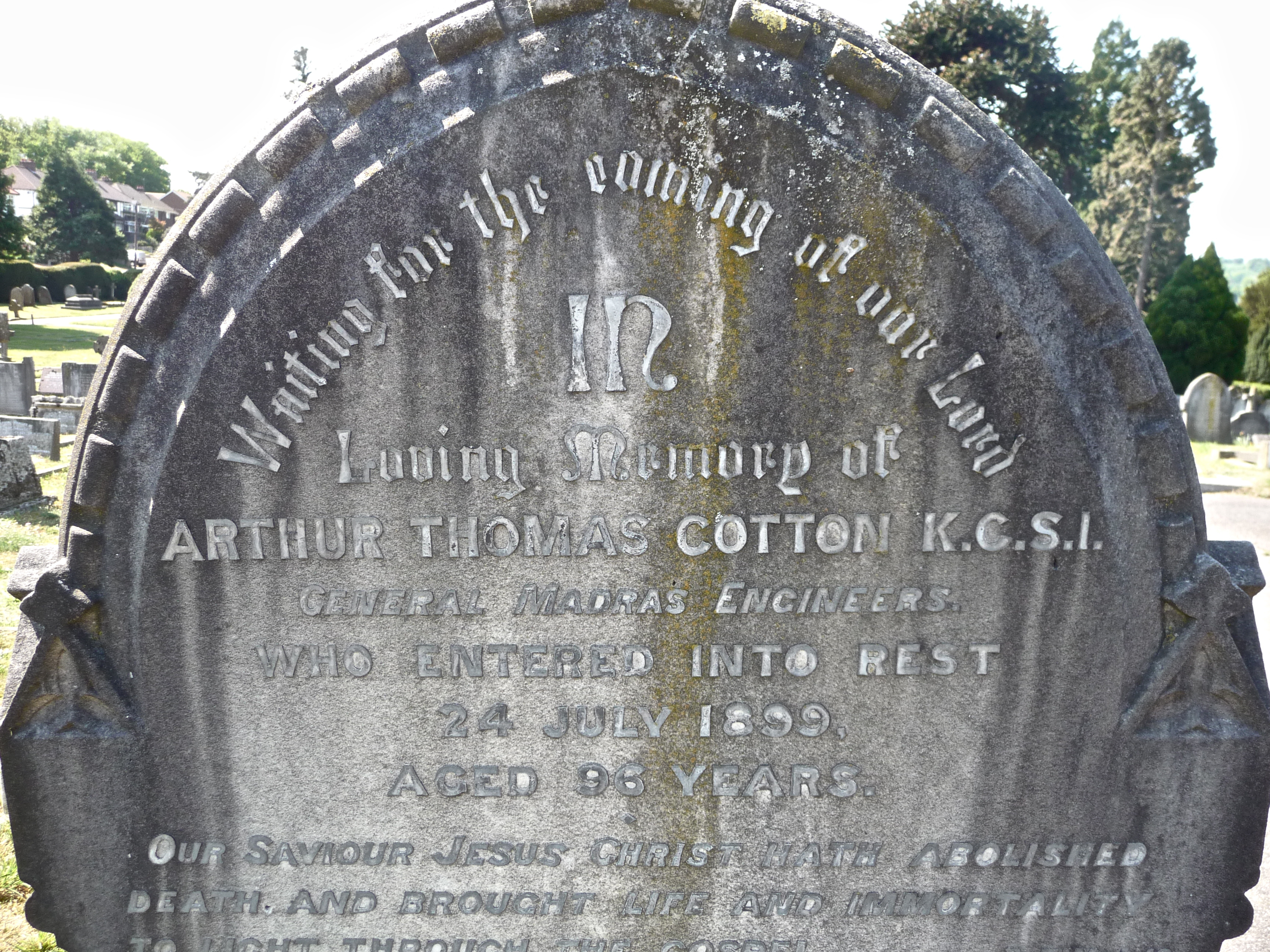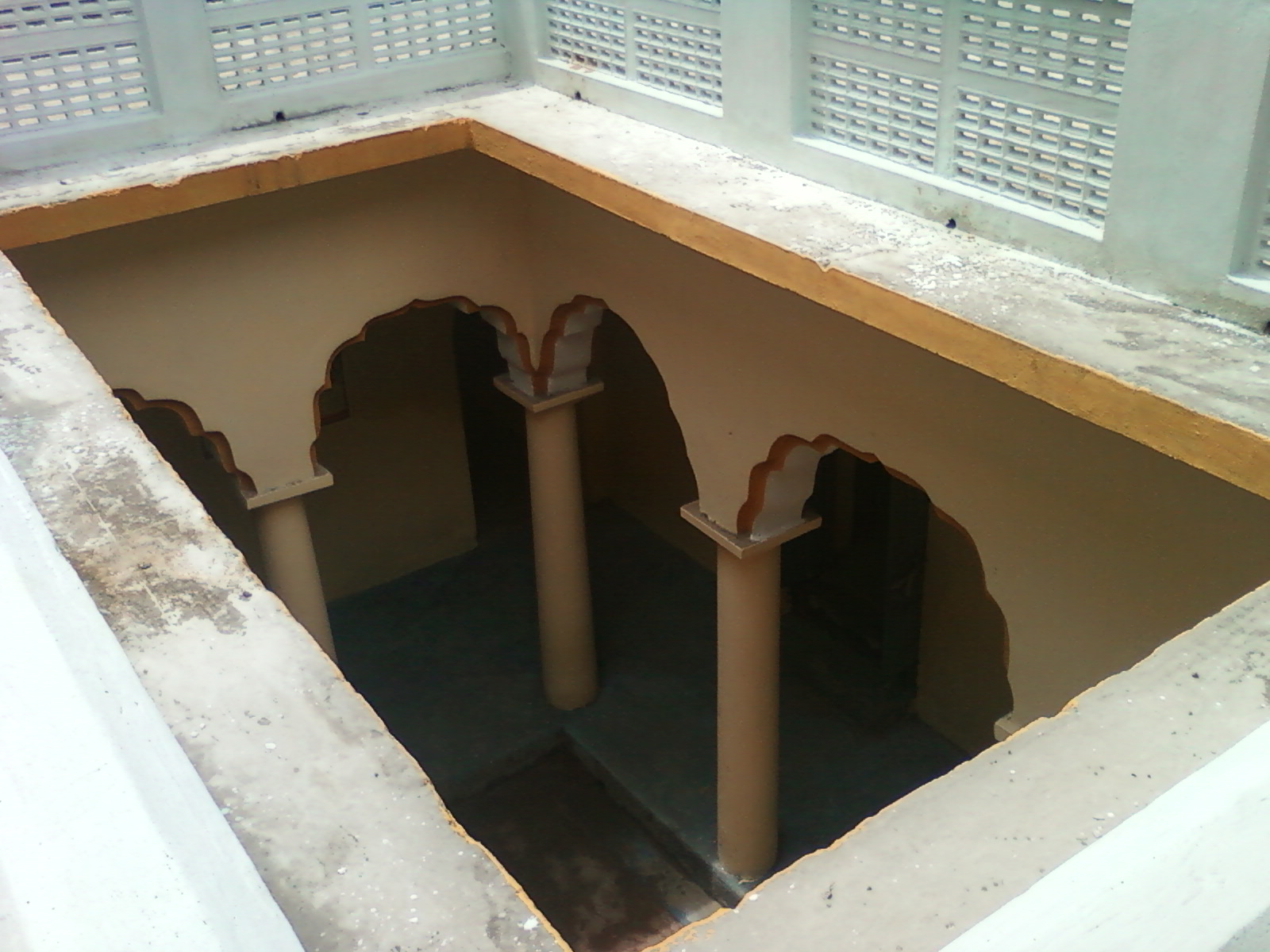|
Tank Bund Road
The Tank Bund Road is a road in Secunderabad, Hyderabad, India. The Tank Bund dams Hussain Sagar lake on the eastern side and connects the twin cities of Hyderabad and Secunderabad. It has become an attraction with 33 statues of famous people from the region. The Pakistan Patton tank, now an attraction for visitors to the Tank Bund Road, is a War Trophy given to the 54th Infantry Division, and is one that the Indian Army had disabled during the Battle of Basantar in Pakistan, between 15 and 17 December 1971. Parallel to the Tank Bund Road, the Lower Tank Bund road was built to reduce traffic congestion. Lumbini Park is the nearest park to this road. The road is also a major point for street photography. Statues of Icons along Tank Bund Road 34 well-sculptured bronze statues, mounted on high platforms, of people who played iconic role in the development of Hyderabad and Telugu culture along the Tank Bund road. The statues were installed by the then Chief Minister of Andhra Prade ... [...More Info...] [...Related Items...] OR: [Wikipedia] [Google] [Baidu] |
Secunderabad
Secunderabad, also spelled as Sikandarabad (, ), is a twin cities, twin city of Hyderabad and one of the six zones of the Greater Hyderabad Municipal Corporation (GHMC) in the States and union territories of India, Indian state of Telangana. It is the headquarters of the South Central Railway zone. Named after the Mir Akbar Ali Khan Sikander Jah, Asaf Jah III, Nizam of Hyderabad, Nizam of the Asaf Jahi dynasty, Secunderabad was established in 1806 as a British cantonment. Although both the cities are together referred to as the twin cities, Hyderabad and Secunderabad have different histories and cultures, with Secunderabad having developed directly under British rule until 1948, and Hyderabad as the capital of the Nizams' Hyderabad State, princely state of Hyderabad. Geographically divided from Hyderabad by the Hussain Sagar lake, Secunderabad is no longer a separate municipal unit and has become part of Hyderabad's Greater Hyderabad Municipal Corporation. Both cities are collec ... [...More Info...] [...Related Items...] OR: [Wikipedia] [Google] [Baidu] |
Asaf Jahi Dynasty
The Asaf Jahi was a Muslim dynasty that ruled the Kingdom of Hyderabad. The family came to India in the late 17th century and became employees of the Mughal Empire. They were great patrons of Persian culture, language, and literature, the family found a ready patronage. The dynasty was founded by Mir Qamar-ud-Din Siddiqi, a Viceroy of the Deccan—(administrator of six Mughal governorates) under the Mughal emperors from 1713 to 1721. He intermittently ruled after Aurangzeb's death in 1707 and under the title Asaf Jah in 1724. The Mughal Empire crumbled and the Viceroy of the Deccan, Asaf Jah I, declared himself independent, whose domain extend from the Narmada river in the North to Trichinopoly in the South and Masulipatnam in the east to Bijapur in the west. History Nawab Khwaja Abid Siddiqi, grandfather of the first Nizam, was born in Aliabad near Samarkhand in the kingdom of Bukhara in modern-day Uzbekistan. His father, Alam Shaik, was a well-known Sufi and celebrated m ... [...More Info...] [...Related Items...] OR: [Wikipedia] [Google] [Baidu] |
Kurnool Cuddappah Canal
Kurnool Cuddappah Canal popularly known as K.C. Canal is an irrigation canal located in Kurnool and Kadapa districts in Andhra Pradesh, India. History The K.C.Canal was constructed between 1863 and 1870 as an irrigation and navigation canal. This canal interconnects the rivers Penner and Tungabhadra. It starts from the Sunkesula barrage located on the Tungabhadra River near Kurnool. The navigation system was abandoned during 1933 and the canal continued to be a major irrigation source. To improve the efficiency of the system, modernization of the entire canal and repairs/reconstruction of the structures is taken up under K.C. Canal modernization. The project is under construction to stabilize entire ayacut of KC Canal and to develop the gap ayacut of 60,000 acres. The canal presently irrigates nearly 1,70,000 acres with 40 Tmcft (thousand million cubic feet) water utilisation from the Krishna River. Assured water availability Alternate water supply from Srisailam reservo ... [...More Info...] [...Related Items...] OR: [Wikipedia] [Google] [Baidu] |
Dowleswaram Barrage
The Dowleswaram Barrage Or Dhavaleshwaram Barrage was an irrigation structure originally built in 1852 on the lower stretch of the Godavari River before it empties into the Bay of Bengal. It was rebuilt in 1970 when it was officially renamed as Sir Arthur Cotton Barrage or Godavari Barrage. Geography The Godavari River empties its water into the Bay of Bengal after flowing nearly fifty miles from the Dowleswaram Barrage. Rajahmundry is a city situated on the left bank of Godavari River. Upstream, where the river is divided into two streams; the Gautami to the left and the Vasistha to the right, forms the joining line between the West Godavari and the East Godavari districts. The dam alignment crosses two mid stream islands. Original Dowleswaram Barrage The original Dowleswaram Barrage (also spelled ''Dowlaisweram'' or ''Dowlaiswaram'') was built by a British irrigation engineer, Sir Arthur Thomas Cotton and completed in 1850. The barrage was constructed in four sections, whi ... [...More Info...] [...Related Items...] OR: [Wikipedia] [Google] [Baidu] |
Prakasam Barrage
The Prakasam Barrage stretches 1223.5 m across the Krishna River connecting Vijayawada, NTR and Mangalagiri Tadepalle Municipal Corporation, Guntur districts in Andhra Pradesh, India. The barrage serves also as a road bridge and spans over a lake. The three canals associated with the barrage run through the city of Vijayawada, crossing it and giving it a Venetian appearance. The idea of constructing a dam across the river Krishna dates back to 1798. It began in the hands of captain Buckle and was revised in 1839 and 1841 by Captain Best and Captain Lake. After the endorsement of Major Cotton, the board of Directors of the East India Company approved it on 5 January 1850. The dam was started in 1852 and completed in 1855. It cost Rs 1.75 crore in those days and seems to have paid the then government a return of 18%. It used to irrigate 7 lakh acres. Later, the State Government constructed a bridge that was named after Tanguturi Prakasam, the first Chief Minister of Andhra (a st ... [...More Info...] [...Related Items...] OR: [Wikipedia] [Google] [Baidu] |
Sir Arthur Cotton
General Sir Arthur Thomas Cotton (15 May 1803 – 24 July 1899) was a British general and irrigation engineer. Cotton devoted his life to the construction of irrigation and navigation canals throughout British India. He helped many people by building the Dowleswaram Barrage (Rajamahendravaram), the Prakasam Barrage and the Kurnool Cuddappah Canal (K. C. Canal). His dream was only partially realised, but he is still honoured in parts of Andhra Pradesh and Tamil Nadu for his efforts. The Sir Arthur Cotton Museum has been built in his honour in Rajamahendravaram, Andhra Pradesh. The museum holds approximately one hundred images and 15 machine tools that Cotton used when constructing the barrage in Andhra Pradesh from 1847 to 1852. He entered the Madras Engineers in 1819 and fought in the First Burmese War. He was knighted in 1861. He was the father of the evangelist Elizabeth Hope. Biography Arthur Cotton was born on 15May 1803 at Combermere, the tenth son of Henry Calvely ... [...More Info...] [...Related Items...] OR: [Wikipedia] [Google] [Baidu] |
British Raj
The British Raj (; from Hindi ''rāj'': kingdom, realm, state, or empire) was the rule of the British Crown on the Indian subcontinent; * * it is also called Crown rule in India, * * * * or Direct rule in India, * Quote: "Mill, who was himself employed by the British East India company from the age of seventeen until the British government assumed direct rule over India in 1858." * * and lasted from 1858 to 1947. * * The region under British control was commonly called India in contemporaneous usage and included areas directly administered by the United Kingdom, which were collectively called British India, and areas ruled by indigenous rulers, but under British paramountcy, called the princely states. The region was sometimes called the Indian Empire, though not officially. As ''India'', it was a founding member of the League of Nations, a participating nation in the Summer Olympics in 1900, 1920, 1928, 1932, and 1936, and a founding member of the United Nations in San F ... [...More Info...] [...Related Items...] OR: [Wikipedia] [Google] [Baidu] |
Alluri Sita Rama Raju
Alluri Sitarama Raju (4 July 1897 or 1898 – 7 May 1924) was an Indian revolutionary, who waged an armed campaign against the British colonial rule in India. Born in present-day Andhra Pradesh, he was involved in opposing the British in response to the 1882 Madras Forest Act which restricted the free movement of Adivasis in their forest habitats, and prevented them from practicing their traditional form of agriculture called podu. Rising discontent towards the British led to the Rampa Rebellion of 1922, in which Alluri played the major role as its leader. Mustering combined forces of Adivasis, farmers and other sympathizers to the cause, he engaged in guerilla campaigns against the British in the border regions of then Madras Presidency, now parts of East Godavari and Visakhapatnam. He was given the epithet"''Manyam Veerudu''" () by the local villagers for his heroic exploits. Harnessing widespread discontent of the Indian people towards the British colonial authorities ... [...More Info...] [...Related Items...] OR: [Wikipedia] [Google] [Baidu] |
Ballari Raghava
Bellary Raghava (Telugu: బళ్ళారి రాఘవ; born ''Tadipatri Raghavacharyulu''; 2 August 1880 – 16 April 1946) was an Indian playwright and actor, known for his works predominantly in Telugu theatre and cinema.M.L. Narasimharao (2002) ''Nooruguru Telugu Pramukhulu''. Vepachedu Educational Foundation Inc. His uncle Dharmavaram Ramakrishnamacharyulu was a pioneering dramatist in Telugu, and initiated him on the stage. Raghava was also associated with another dramatist from Bellary, Kolachalam Srinivasa Rao. His students include female artists like ''Sarojini Kopparapu'', ''Padmavati Kommuri'', ''Annapurna Kakinada'', and male artists like ''Vasudevarao K.S.'', ''Apparao Basavaraju'' and ''Banda Kanakalingeshwara Rao''. Early life Raghava studied at Bellary High School and at Christian College, Madras. He then practiced law after graduating from Madras Law College in 1905. Aged 12, he founded Shakespeare Club in Bellary and played in Shakespeare dramas. Raghava ... [...More Info...] [...Related Items...] OR: [Wikipedia] [Google] [Baidu] |
Telugu Language
Telugu (; , ) is a Dravidian language spoken by Telugu people predominantly living in the Indian states of Andhra Pradesh and Telangana, where it is also the official language. It is the most widely spoken member of the Dravidian language family and one of the twenty-two scheduled languages of the Republic of India. It is one of the few languages that has primary official status in more than one Indian state, alongside Hindi and Bengali. Telugu is one of six languages designated as a classical language (of India) by the Government of India. Telugu is also a linguistic minority in the states of Karnataka, Tamil Nadu, Maharashtra, Gujarat, Chhattisgarh, Orissa, West Bengal, and the union territories of Puducherry and Andaman and Nicobar Islands. It is also spoken by members of the Telugu diaspora spread across countries like United States, Australia, United Kingdom, Canada, New Zealand in the Anglosphere; Myanmar, Malaysia, South Africa, Mauritius; and the Arabian Gulf count ... [...More Info...] [...Related Items...] OR: [Wikipedia] [Google] [Baidu] |
Gurajada Apparao
Gurajada Venkata Apparao (21 September 1862 – 30 November 1915) was an Indian playwright, dramatist, poet, and writer known for his works in Telugu theatre. Rao wrote the play ''Kanyasulkam'' in 1892, which is considered as the greatest play in the Telugu language. One of the pioneers of Indian theatre, Rao holds the titles ''Kavisekhara'' and ''Abyudaya Kavitha Pithamahudu''.20th Century Telugu Luminaries, Potti Sriramulu Telugu University, Hyderabad, 2005 In 1910, Rao scripted the widely known Telugu patriotic song " Desamunu Preminchumanna". In 1897, Kanyasulkam was published (by Vavilla Ramaswamy Sastrulu and Sons, Madras) and dedicated to Maharaja Ananda Gajapati. Apparao (along with his brother Syamala Rao) wrote several English poems. His Sarangadhara, published in "Indian Leisure Hour", was well received. The editor of the Calcutta-based "Rees and Ryot", Sambhu Chandra Mukherji read it and re-published it in his magazine. ''Gundukurti Venkata Ramanayya'', editor of th ... [...More Info...] [...Related Items...] OR: [Wikipedia] [Google] [Baidu] |
Cattamanchi Ramalinga Reddy
Sir Cattamanchi Ramalinga Reddy (10 December 1880 – 24 February 1951), also popularly known as Sir C. R. Reddy, was an educationist and political thinker, essayist and economist, poet and literary critic. He was a prominent member of the Justice Party and an ardent champion of the non-Brahmin movement, joining the movement to unite the non-Brahmin communities. He wrote his works in Telugu and English; these reveal his deep love for Indian classics and his learning in these texts, as well as the modernity of his outlook. Reddy was the educationalist who played a major role in shaping the educational policy in India. He was also the recipient of a British Knighthood in honour of his service to the country. He was the founder of Andhra University and also served as its first Vice-Chancellor from 1926 to 1931 and in a further second term from 1936 to 1949. Early life Reddy was born in Kattamanchi, a suburb of Chittoor city. He was the second son of Subrahmanya Reddy, who had bui ... [...More Info...] [...Related Items...] OR: [Wikipedia] [Google] [Baidu] |








